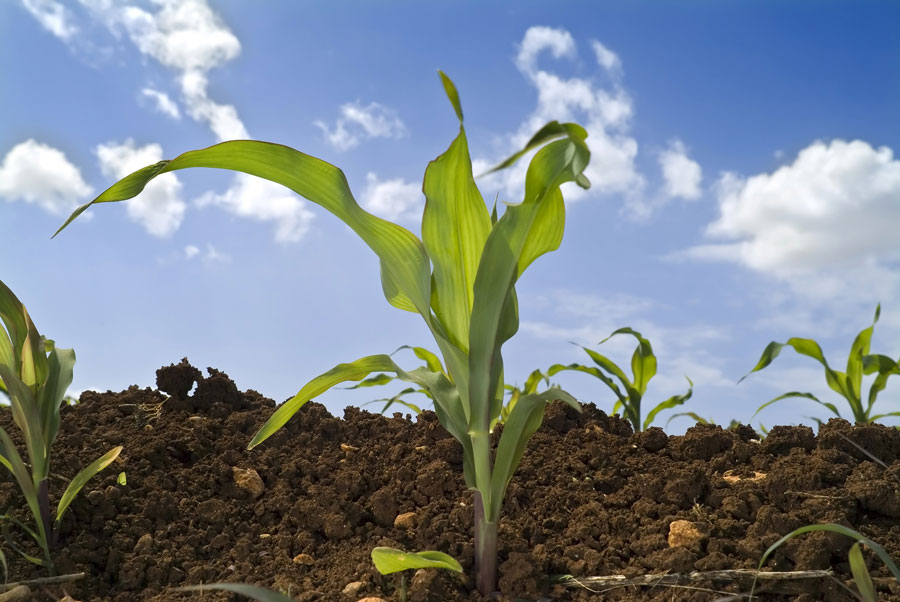The Province of Malanje is playing a leading role in restoring Angolan agriculture to its former glory; and the Capanda agro-industrial hub is the epicenter of Malanje’s agricultural revival

Twelve years on since the end of Angola’s civil war and the country still relies heavily on the importation of agricultural products. Angola’s oil and mining industries have come on strides since 2002, but agriculture has remained neglected, despite the country’s rich potential, fertile soils, vast arable land and favorable climate.
For the Governor of Malanje Province, Norberto dos Santos, this is something difficult to accept: “Twelve years after the war, we still have to import products that we could very well produce locally, especially here in Malanje, since our soil is naturally very fertile. In order to move on to the next stage of development, we must leverage our agro-industry to better cover the chain of production, which has greater impact in terms of employability than the oil or diamond industries.
“What we want is to abandon our oil dependence by diversifying our economy, to make the country more competitive in terms of imported goods, especially those that our soil can produce.”
The national government has high ambitions to develop an agribusiness industry so that Angola can become food self-sufficient, thus reducing dependence on food imports which have contributed to the capital Luanda becoming one of the most expensive cities in the world. A developed agriculture sector will also help to end an overdependence on oil and mining.
Central to the government’s agriculture plans is Malanje Province, once an important hub for the country’s thriving cotton and coffee industries during colonial times. Agriculture is starting to take off here again following decades of dormancy, and numerous international investors, particularly from Brazil and China, are offering capital, machinery and knowledge transfer to get the industry off the ground.
“Malanje is an essentially agricultural province, which is why the government considered Malanje as a logistics center for the production of corn, beans, soy and cotton,” says Governor Norberto dos Santos.
“The Government is establishing partnerships with foreign companies to produce sugar and electricity this year. Our complete dependence on imported sugar will, little by little, become a thing of the past.”
Biocom is one of the largest investors in Malanje’s agriculture sector and is producing both sugar and electricity at its agro-industrial unit in Cacuso. Earlier this year it expanded its operations to bring annual production to 18,000 tons of sugar and 3,000 cubic metres of ethanol, a biofuel which is a byproduct of sugar cane. The biofuel it produces is fed directly into its ethanol-propelled power station which can generate more than 120 gigawatts.
The company is helping to put Malanje on the path to food and energy self-sufficiency, and production capacity of both sugar and ethanol at its plantation will continue to grow. At a ceremony in August to celebrate the signing of an investment contract with Angola’s National Agency for Private Investment (ANIP) worth $750 million, the managing director of Biocom, Carlos Henriques Mathiasthat said that, with the progress made at its sugarcane plantation, he foresees the company producing 256,000 tons of sugar per year.

Norberto dos Santos, Governor of Malanje Province
Biocom’s agro-industrial unit in Cacuso makes up part of the larger Capanda agro-industrial hub—the epicenter of Malanje’s agricultural revival, which was established in 2006 to expand a rural development model that is sustainable, economically viable, environmentally smart and socially inclusive.
Spread out over the municipal areas of Cacuso, Malanje and Cangandala, the farming project covers an area of approximately 411,000 hectares with 270,000 hectares of usable land—256,000 hectares of which is used for rain-fed cropping, and 13,000 hectares is irrigated. An environmental reserve occupies 70,000 hectares, and another 10,000 hectares has been used for social housing.
Soya beans, corn, cassava, sugar cane, cotton and dairy are produced at the Capanda facility, which is home to the Pedras Negras, Pungo-Andongo (run by Gesterra, the Angolan state owned agricultural enterprise) and Biocom farms, as well as the Kizenga agro-industrial development hub and the Malanje Food Company.
The whole project is managed by Sodepac (The Society for the Development of Capanda Agro-Industrial Unit) and is being run on a public-private partnership (PPP) model, with Sodepac overseeing negotiations with the private sector. The facility is well connected by road rail and air. With Malanje Airport and the Malanje-Luanda railway line nearby, it may one day serve as a thriving export hub for Angola’s agricultural products, should the country’s agricultural potential eventually be fully realized in the coming years.
by Jonathan Meaney, Worldfolio staff writer
0 COMMENTS